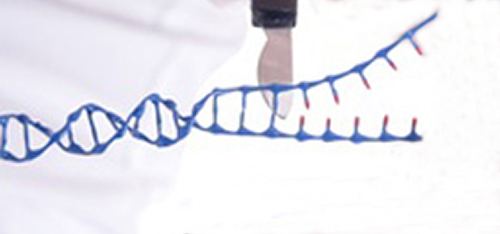Our genetic material is littered with parasitic DNA sequences, known as transposons, which promote their own propagation and transmission, rather than their host’s1. Their movements (transposition) within and between genomes have profound consequences for the genetic code — sometimes leading to diseases, but also driving genetic diversity and evolution2. Transposase proteins mediate this movement by executing all the required chemical reactions.
Strikingly, these proteins have been repeatedly repurposed throughout evolution to produce new biological functions that benefit the host. A prime example is the vertebrate immune system, in which transposase-like RAG proteins help to assemble new genes from three pools of interchangeable DNA parts (known as V, D and J gene segments). This process is called V(D)J recombination, and equips immune cells with a diverse set of sensors that can recognize many threats3. Writing in Nature, Liu et al.4 report a series of structures of a transposase that is an ancestor5 of RAG, casting light on the evolutionary history of these proteins.
Transposases must recognize several DNA sites, and then cut and join them in the proper order6. To understand this multi-step process, we need to visualize the structures of the molecular machinery involved at all stages, which is a major technical challenge. Liu et al. have now drawn on a powerful combination of two techniques — X-ray crystallography and single-particle cryo-electron microscopy — to picture several steps of transposition in remarkable detail, thereby providing a molecular ‘movie’ of the process.
The authors’ achievements build on many years of structural studies of transposases7–11 and RAG12–15, providing an increasingly complete view of their functions and helping to connect the dots between the ‘selfish’ DNA rearrangements of transposases and the essential functions that evolved from them. Transposases are now known to have a catalytic core unit and diverse extra parts that bind to DNA or control transposase function6. They usually act in pairs, with each dimer holding two segments of the transposon DNA …







